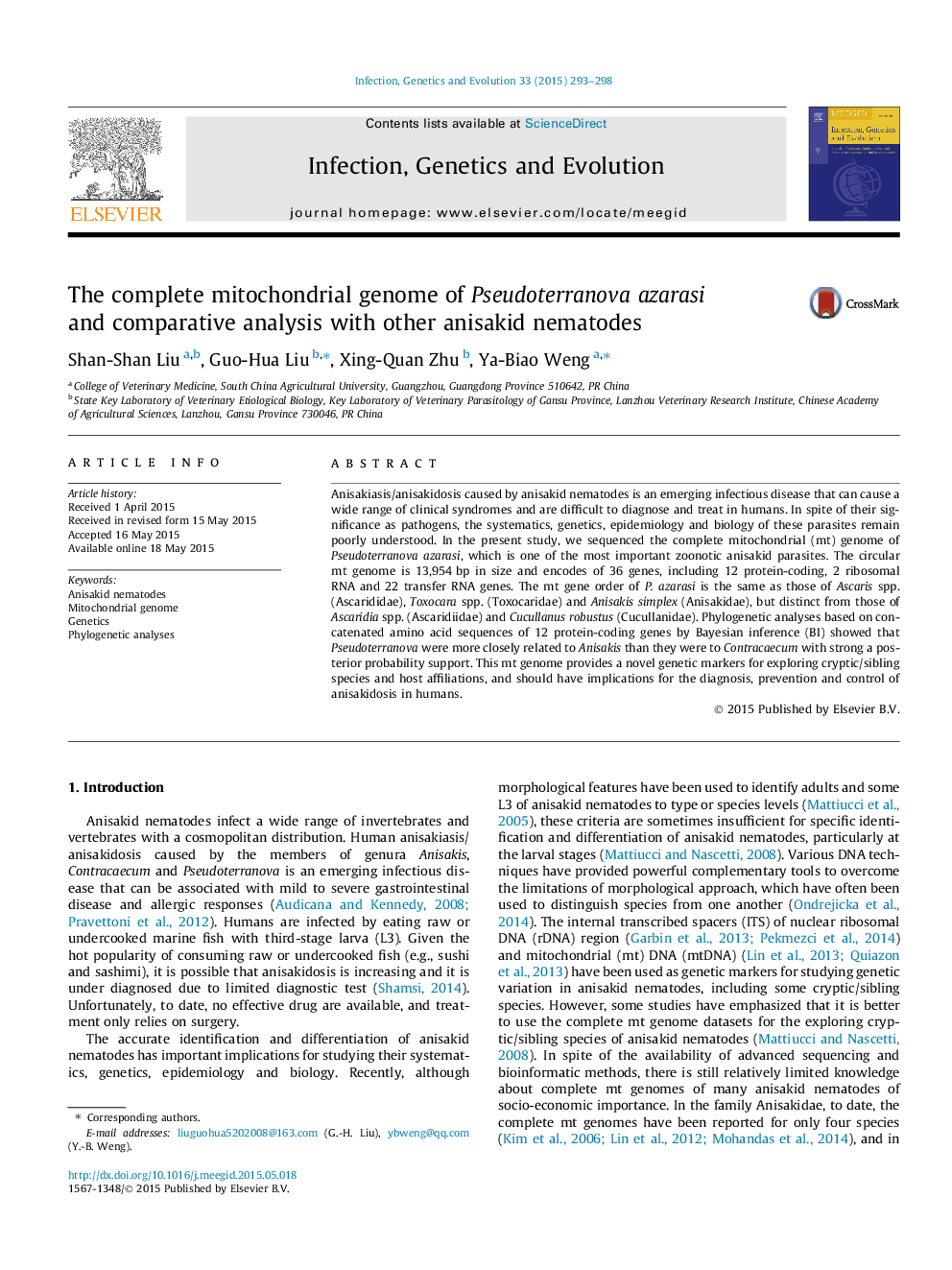| Article ID | Journal | Published Year | Pages | File Type |
|---|---|---|---|---|
| 5908885 | Infection, Genetics and Evolution | 2015 | 6 Pages |
â¢The mitochondrial (mt) genome of Pseudoterranova azarasi is 13,954 bp in size.â¢It consists of 12 genes for proteins, 2 genes for rRNA and 22 genes for tRNA.â¢P. azarasi is more closely related to Anisakis than to Contracaecum phylogenetically.â¢P. azarasi mt genome sequences provide novel genetic markers for further studies.
Anisakiasis/anisakidosis caused by anisakid nematodes is an emerging infectious disease that can cause a wide range of clinical syndromes and are difficult to diagnose and treat in humans. In spite of their significance as pathogens, the systematics, genetics, epidemiology and biology of these parasites remain poorly understood. In the present study, we sequenced the complete mitochondrial (mt) genome of Pseudoterranova azarasi, which is one of the most important zoonotic anisakid parasites. The circular mt genome is 13,954Â bp in size and encodes of 36 genes, including 12 protein-coding, 2 ribosomal RNA and 22 transfer RNA genes. The mt gene order of P. azarasi is the same as those of Ascaris spp. (Ascarididae), Toxocara spp. (Toxocaridae) and Anisakis simplex (Anisakidae), but distinct from those of Ascaridia spp. (Ascaridiidae) and Cucullanus robustus (Cucullanidae). Phylogenetic analyses based on concatenated amino acid sequences of 12 protein-coding genes by Bayesian inference (BI) showed that Pseudoterranova were more closely related to Anisakis than they were to Contracaecum with strong a posterior probability support. This mt genome provides a novel genetic markers for exploring cryptic/sibling species and host affiliations, and should have implications for the diagnosis, prevention and control of anisakidosis in humans.
